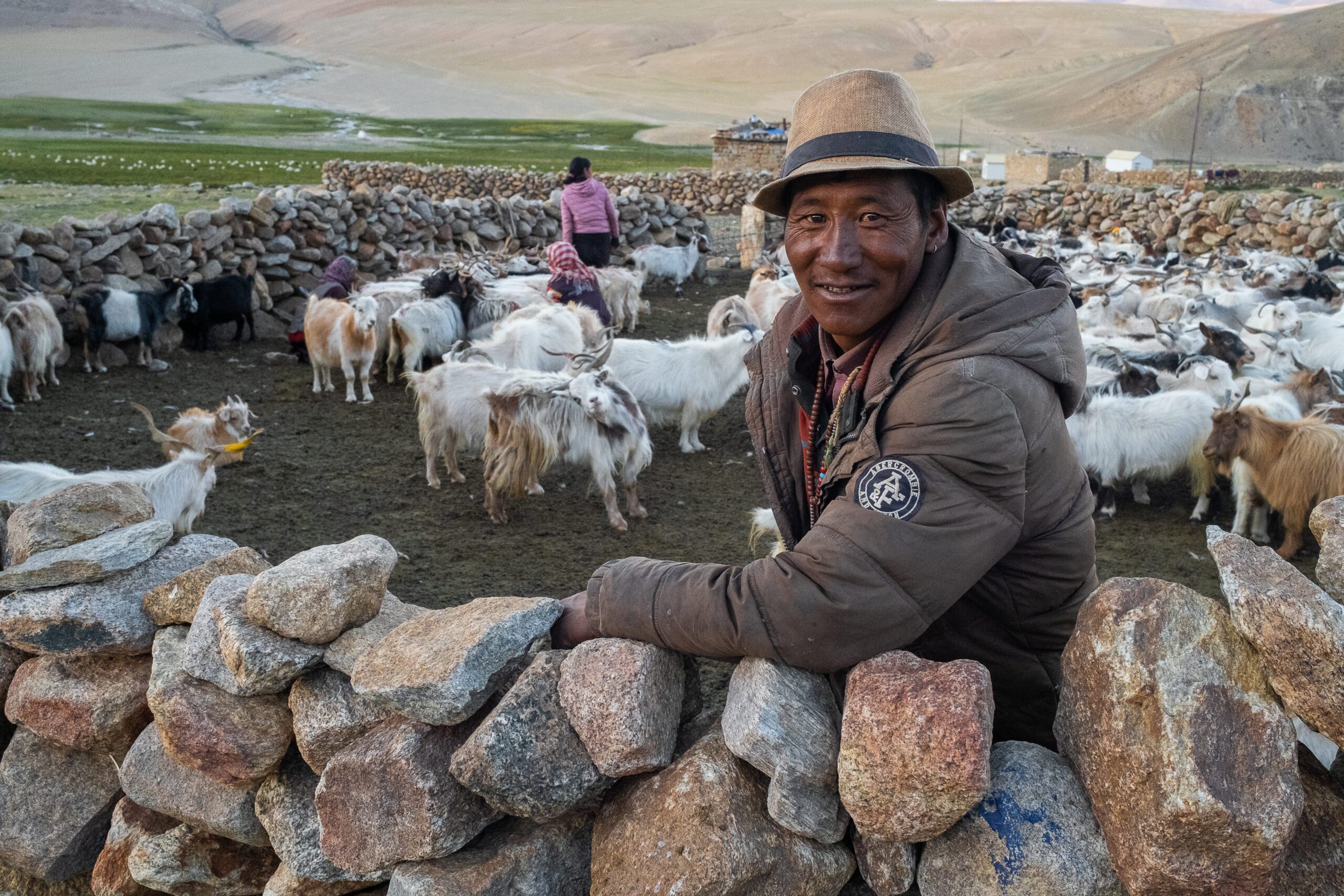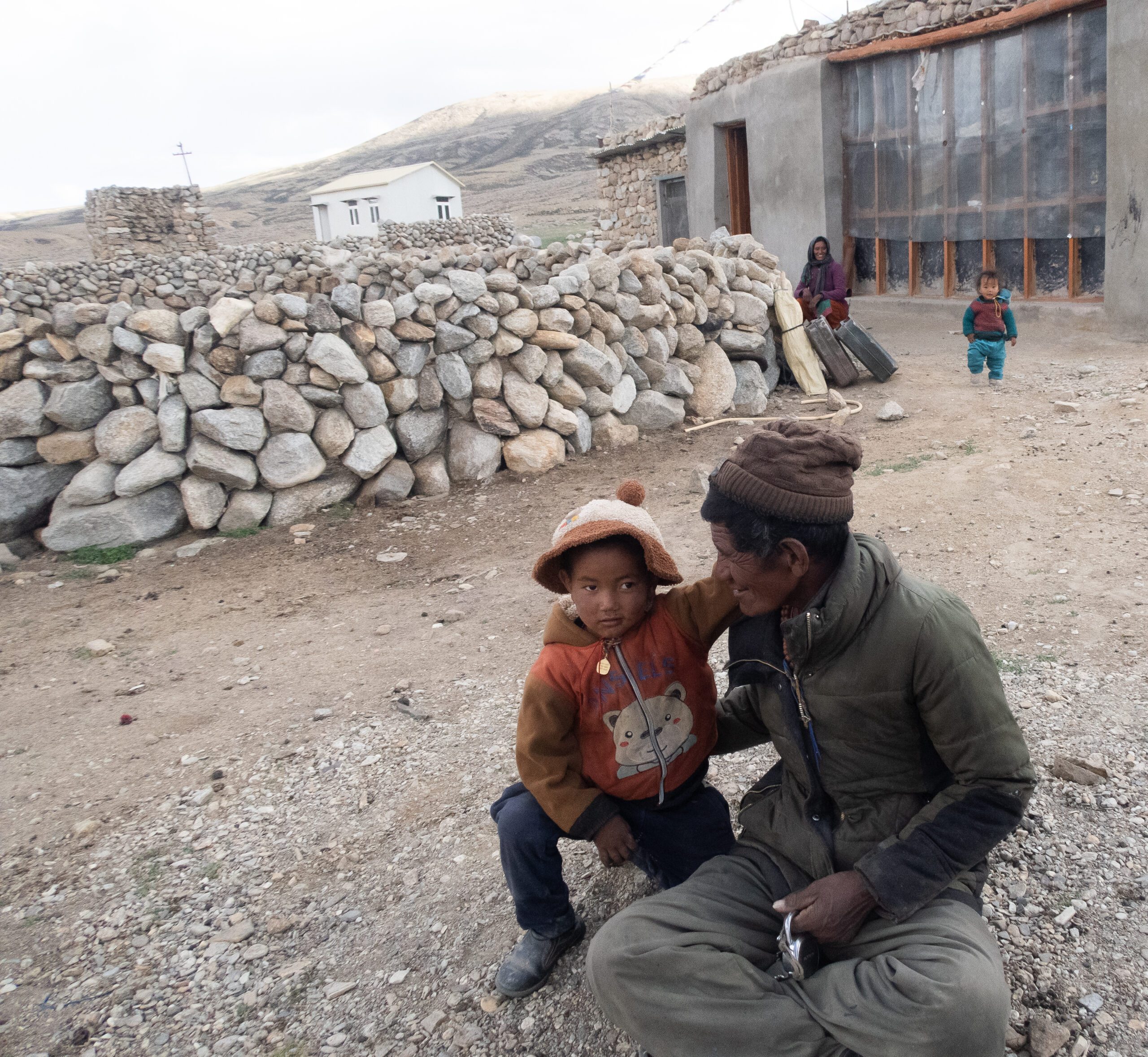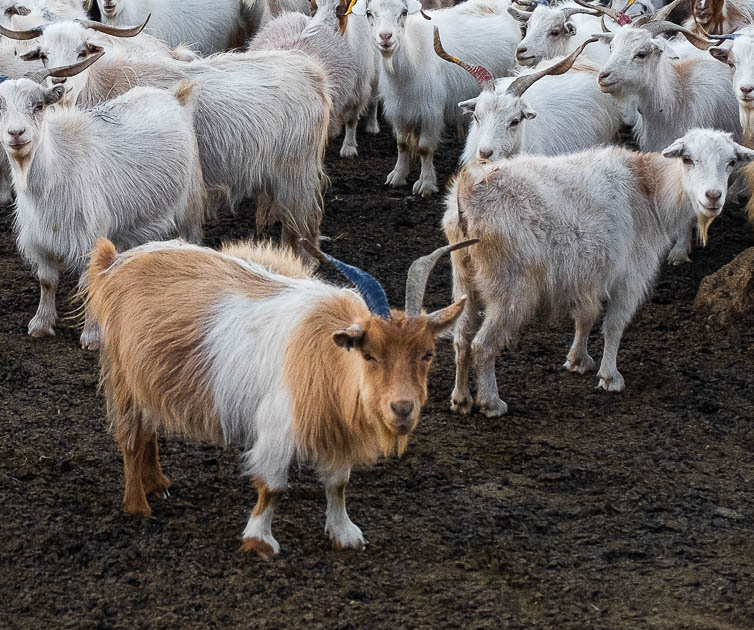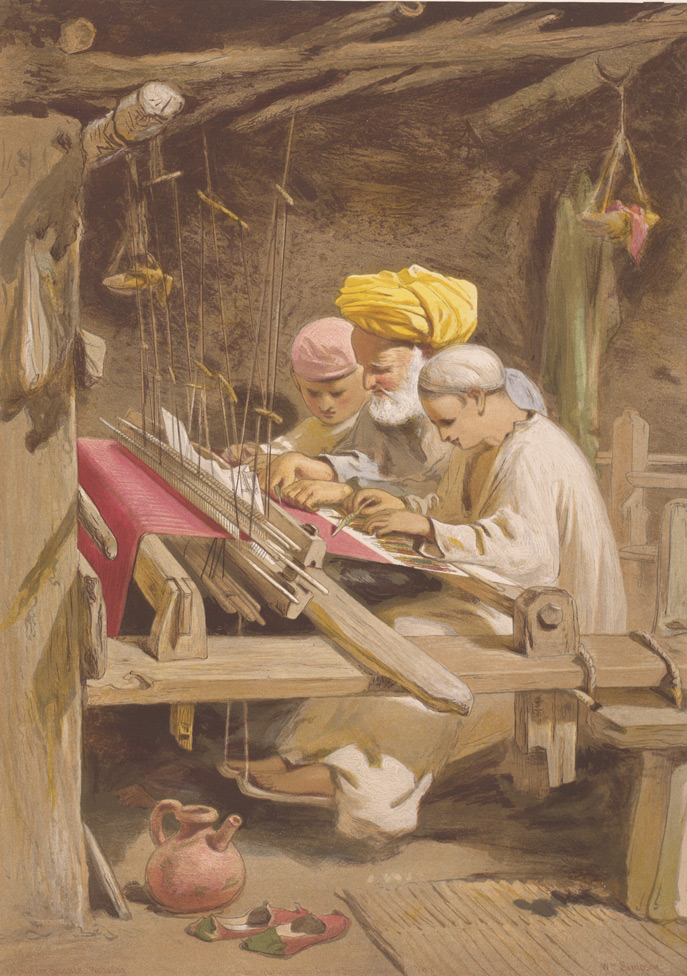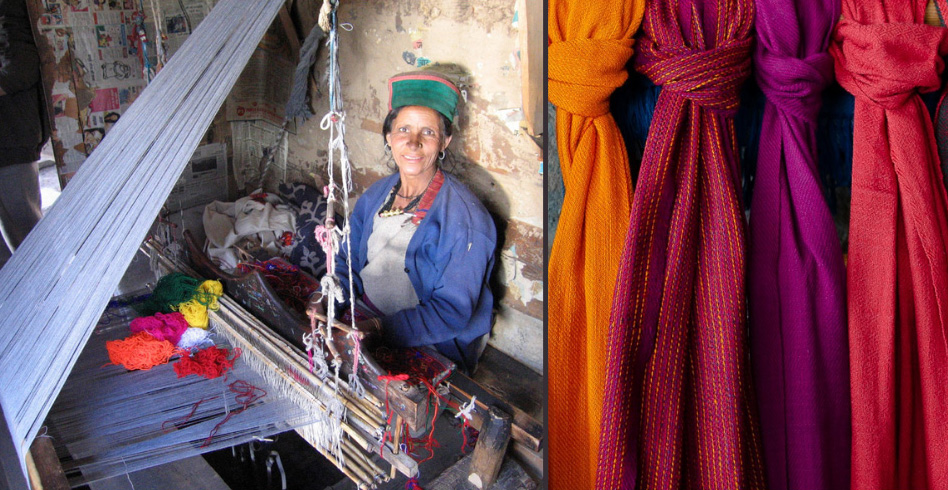Bhotiyas and Himalayan Wool
Many Himalayan communities have a tradition of working with wool. Most of them are pastoralists who keep large herds of animals, especially sheep. While their dependence on animals for subsistence has diminished in recent years, wool and its products such as shawls, throws and carpets are still an important source


